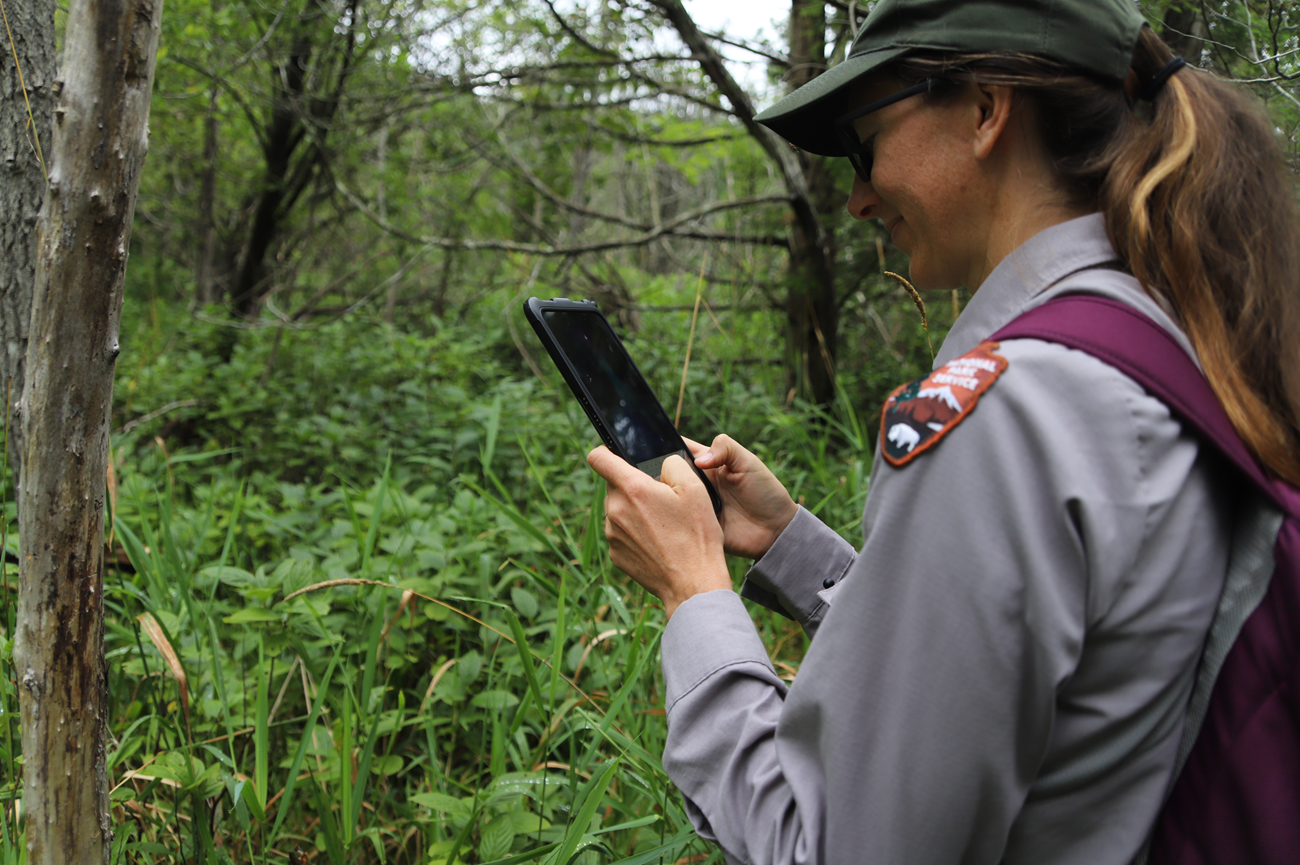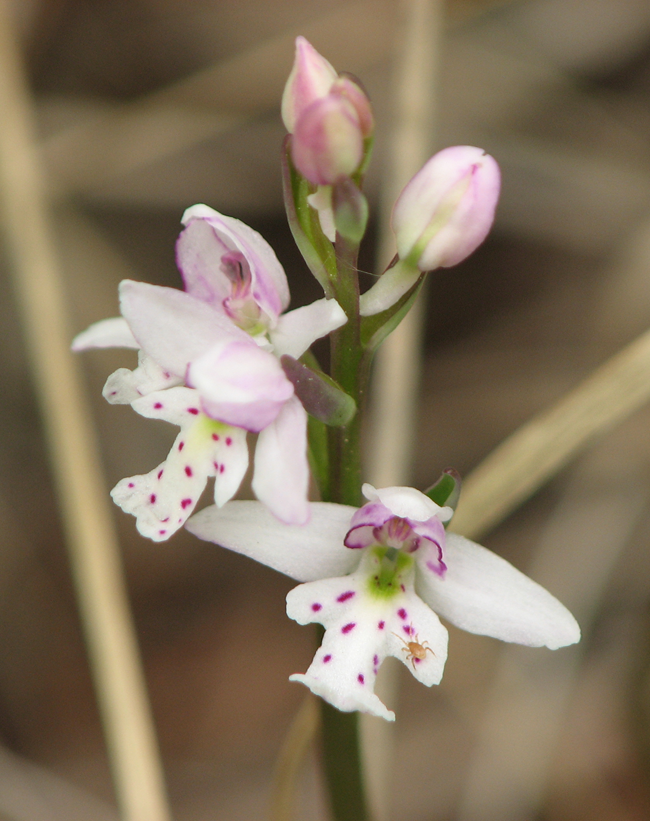Last updated: December 16, 2024
Article
Searching for Rare Orchids at Sleeping Bear Dunes

NPS Photo / R. Klammer
Have you ever seen a ranger crawling through a marsh and wondered what they were doing?
Park rangers don't always stick to the trails, especially if their job is looking for rare plants! This is the case for ranger Kara Quirke and her team: Emma Murray and Justin Donahue. They use a mapping software called ArcGIS Field Maps to survey the front and backcountry. This software collects thousands of reports from other rangers on the flora of the area and displays it on a map that can be reviewed in real time. "The program's field maps app allows us to collect geospatial data without being connected to internet," says Justin Donahue.
Instead of digging through hundreds of pages of surveys, ArcGIS Field Maps allows rangers to see what plants are being found and where. Even better, it shows survey results from current and past seasons. Using this software, rangers are constructing a comprehensive map of the flora in Sleeping Bear Dunes: foot by foot, and acre by acre.

NPS Photo / R. Klammer

ceasol, CC BY-SA 2.0
The report by the Overleases is over 40 years old, and the report by Parker is over 120 years old. Kara and her team still use these old surveys to pinpoint areas where rare plants could be today. Sometimes, finding rare plants is like playing a centuries-long game of telephone. Although facts can become muddled as they are passed down, these old reports are often all that Kara's team have to go on.
Sometimes the team has to rely on guesswork. An old survey might report a plant along a road that no longer exists. Some locations are identified by a name that hasn't been used for 100 years. Many of these names were not well documented, or only used colloquially, and are now long gone. In Kara's copy of these surveys, guesses are scrawled in the margins: "Boekeloo = Copper Road?" And, over and over again, "Location?"
The work is hard, but Kara loves it. "I think it's wonderful that because land has been protected so long, I can find plants that haven't been seen since the 1970s. So I go on wild goose chases and sometimes it pays off." This particular wild goose chase takes Kara and her team to a cedar swamp. They spend over five hours looking for the elusive orchid. They walk, crawl, and crouch through the dense plants, combing through the tall grass. Sometimes they stop to admire a seemingly ordinary plant that turns out to be a unique sedge. They find beauty in plants that most would step over.

NPS Photo / R. Klammer
"There is such a diverse group of tiny plants under all the others that we usually don't see if we don't look!" Emma Murray says. "There's so much beauty in the way life forms, the way it evolves. So much random mutation and evolution that leads to this one perfect and wonderful thing."
The trip into the cedar swamp is fruitful. They discover dozens of Northern bog orchids, along with fen orchids and bog muhly (Muhlenbergia uniflora). Unfortunately, the orchid that Kara's team is looking for is nowhere to be found.

NPS Photo / R. Klammer
"I'm concerned for the future because of our changing forest health and temperatures," Kara says. "Habitats are getting smaller and smaller, and becoming more fragmented. Many of our endangered, threatened, and rare plants can only be found in very specific habitats. Pitcher's thistle grows in dunes on the Great Lakes. Michigan Monkey Flower is only in cold water seeps where the ground water is constantly around 45 degrees."
Sometimes, the work that Kara, Emma, and Justin do can be heartbreaking. It can seem hopeless, like they're studying something with one foot in fable. Many of these plants thrive in ecosystems that once were here but are no longer. Without intervention, they may eventually only exist in the notes of old surveys. This is exactly why conservation efforts in Sleeping Bear Dunes are so important.

NPS Photo / R. Klammer
Rare plants flourish in healthy ecosystems. The disappearance of rare plants can indicate that the ecosystem needs protection. By cataloging these plants, Kara's team gives officials a chance to fight the degradation of the ecosystems in the in Sleeping Bear Dunes. The data they collect doesn't just benefit the park. It can also help conservationists in other parts of the country to protect their own rare plants and ecosystems.
Species that were once faltering in Sleeping Bear Dunes now have a chance. This is thanks to the work of all rangers in the Natural Resource department, including Kara and her team. Some parts of the backcountry remain secret to all except the Natural Resource team. By protecting these locations, they ensure that the delicate plants there continue to grow.
Perhaps in the future, Kara's team will locate the small round-leaved orchid in the park again. For now, though, the search will have to continue.
